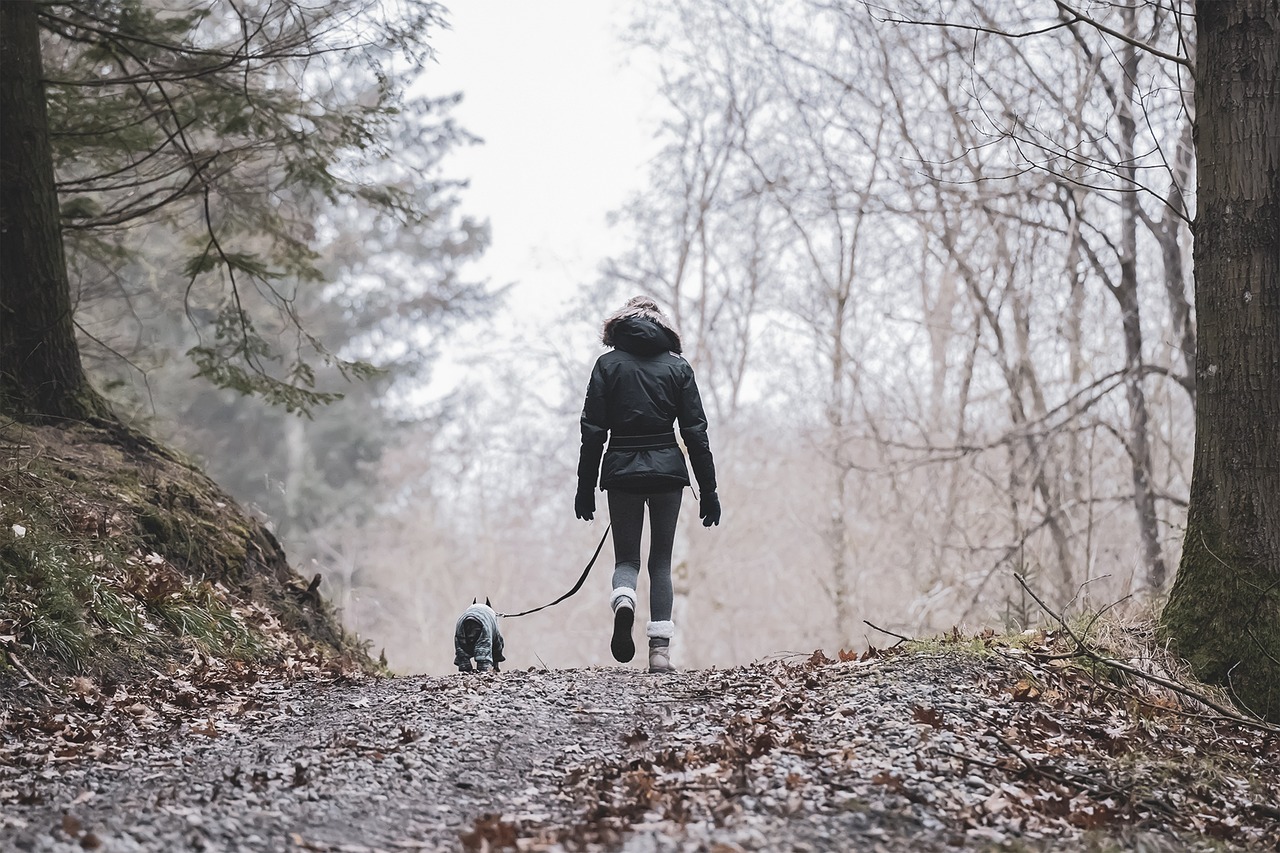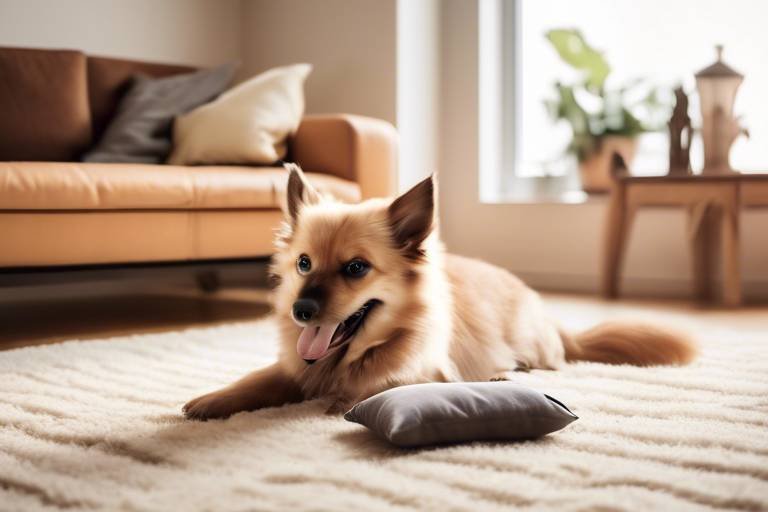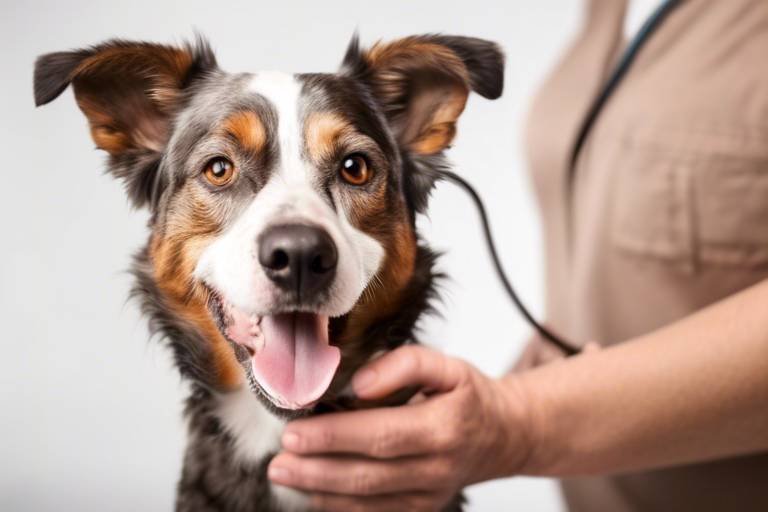How to Help Your Pet Adjust to New Environments
Moving to a new place can be an exciting adventure for you, but for your furry friend, it might feel like being thrown into a whirlwind of confusion and anxiety. Just like us, pets can feel overwhelmed when faced with new sights, sounds, and smells. The good news is that with a little love and understanding, you can help your pet navigate this transition smoothly. In this article, we will explore practical tips and insights that will ease your pet's journey into their new surroundings, ensuring their comfort and well-being during this adjustment period.
Recognizing how pets react to change is crucial. When you move, your pet might exhibit various behaviors that signal their emotional state. Some common signs of stress include excessive barking, hiding, or even being overly clingy. It's important to pay attention to these behaviors as they provide insight into how your pet is coping with the transition. For instance, if your dog is pacing around the house, it may be feeling anxious. On the other hand, a cat that hides under the bed might just need some time to adjust. Understanding these behaviors can help you respond appropriately and provide the support your pet needs.
Establishing a comfortable area for your pet in a new environment is essential for their sense of security. This safe space should be a cozy corner where your pet can retreat when feeling overwhelmed. Consider setting up a designated area with their bed, toys, and food. This familiar zone will help them feel anchored amidst the chaos of moving. Think of it as a little sanctuary where they can relax and recharge. It's like having a personal retreat in a bustling world!
The location of your pet's safe space can significantly impact their comfort. Ideally, you want to choose a quiet corner away from the hustle and bustle of daily activities. Look for a spot that receives natural light but is not too close to loud appliances or high-traffic areas. This could be a cozy nook in the living room or a quiet bedroom corner. The key is to find a place where your pet feels safe and can observe their surroundings without feeling threatened.
Incorporating familiar items into your pet's safe space can significantly ease anxiety. Bringing along their favorite blanket, toys, or even a piece of your clothing can provide comfort and a sense of familiarity. These items act as anchors, helping your pet feel more at home. It's like wrapping them in a warm hug of memories from their old environment. Make sure to have these essentials accessible as soon as you arrive at your new home to help your pet settle in quickly.
A quiet environment is vital for a stressed pet. To create a calming atmosphere, consider using soft music or white noise machines to mask sudden sounds that might startle your pet. Close windows to block out external noise, and try to keep the household calm during the adjustment period. This is especially important during the first few days when your pet is still getting used to their new surroundings. Think of it as creating a peaceful oasis amid the storm of new experiences.
Introducing your pet to different parts of their new environment should be gradual. Start by allowing them to explore one room at a time, keeping the experience positive. Use treats and praise to encourage them as they venture into new spaces. This approach helps prevent overwhelming them with too much stimulation at once. Remember, patience is key! Just like you wouldn’t dive into the deep end of a pool without testing the waters, your pet needs time to acclimate to their new home.
A consistent daily routine can provide stability for your pet. Animals thrive on predictability, so establishing a schedule for feeding, walks, and playtime can help them feel secure. Stick to familiar routines as much as possible to create a sense of normalcy in their new environment. This routine acts like a compass, guiding your pet through the unknown and helping them feel grounded. Just like we find comfort in our daily habits, your pet will appreciate the structure.
Regular feeding and exercise are essential for your pet's well-being. During the transition, try to maintain their usual feeding times and portion sizes. This consistency will reassure them that some things remain unchanged, even in a new environment. Additionally, ensure they get plenty of exercise to burn off any excess energy or anxiety. A well-exercised pet is a happy pet, and it can help them adapt more quickly to their new surroundings.
Engaging your pet in play can alleviate stress and facilitate adjustment to a new environment. Set aside dedicated time for interactive play, whether it's tossing a ball, playing with a feather toy, or engaging in tug-of-war. This not only strengthens your bond but also provides a healthy outlet for their energy. Think of playtime as a mini-vacation for your pet, allowing them to forget their worries and just have fun!
- How long does it take for a pet to adjust to a new home? - Each pet is different, but it generally takes a few days to a few weeks for them to feel comfortable in a new environment.
- What signs indicate my pet is stressed? - Look for signs such as hiding, excessive barking, or changes in eating habits.
- Can I help my pet adjust faster? - Yes! Providing a safe space, maintaining routines, and engaging in play can help ease their transition.

Understanding Your Pet's Behavior
This article provides practical tips and insights on easing your pet's transition into new surroundings, ensuring their comfort and well-being during the adjustment period.
When it comes to our furry friends, understanding their behavior is like reading a book in a different language. Each wag of the tail, every twitch of the ear, and even the way they curl up in a corner can tell us a lot about how they're feeling. Pets, much like humans, have their own unique ways of expressing discomfort, anxiety, or even excitement when faced with new environments. By recognizing these behaviors, you can better support your pet during this transitional phase.
For instance, if your dog suddenly becomes clingy or starts following you around like a shadow, it could be a sign that they are feeling insecure in their new surroundings. On the other hand, if your cat begins to hide away in the closet or under the bed, it's their way of saying, "I'm not ready for this change!" These behaviors are not just quirks; they are indicators of their emotional state and can guide you in how to respond effectively.
Here are some common behaviors to watch out for:
- Vocalization: Excessive barking, meowing, or whining can indicate stress or discomfort.
- Aggression: If your usually friendly pet starts to show signs of aggression, it might be feeling threatened.
- Withdrawal: A pet that suddenly becomes less social may be overwhelmed by the new environment.
Understanding these signs is essential because it helps you respond appropriately. If your pet is vocalizing more than usual, for example, it might be time to check in with them and offer some reassurance. Think of it this way: just like you might feel anxious in a crowded room, your pet can feel the same way in a new home. They need your support to navigate these feelings.
Additionally, each species may react differently to changes. Dogs, being pack animals, often seek out their human companions for comfort, while cats, who are more solitary by nature, may prefer to retreat to a safe space when they're feeling stressed. It's crucial to tailor your approach based on whether you have a dog, cat, or another type of pet. The key is to be observant and patient, allowing your pet the time they need to adapt.
By being attuned to your pet's behavior, you can create a more supportive environment that fosters their well-being. Remember, a little understanding goes a long way in helping them adjust to their new surroundings.
Establishing a comfortable area for your pet in a new environment helps them feel secure. This section discusses how to set up a safe space tailored to your pet's needs.
The location of your pet's safe space can impact their comfort. Here, we delve into factors to consider when selecting the best spot for your pet.
Incorporating familiar items can ease anxiety. This subsection outlines essential belongings to bring along that can help your pet feel more at home.
A quiet environment is vital for a stressed pet. This part offers tips on reducing noise and distractions to create a calming atmosphere.
Introducing your pet to different parts of their new environment should be gradual. This section provides strategies for easing them into new spaces without overwhelming them.
A consistent daily routine can provide stability for your pet. This section discusses how to create and maintain a routine that helps your pet adjust.
Regular feeding and exercise are essential for your pet's well-being. Here, we outline how to establish and stick to these schedules during the transition.
Engaging your pet in play can alleviate stress. This subsection emphasizes the importance of playtime and how it can facilitate adjustment to a new environment.
Here are some common questions pet owners have when helping their pets adjust to new environments:
- How long does it take for a pet to adjust to a new home? - Adjustment can vary, but typically it takes a few weeks to a few months for pets to feel completely comfortable.
- What should I do if my pet shows signs of aggression? - Consult a veterinarian or a pet behaviorist to address aggressive behavior appropriately.
- Are there any specific toys that can help ease my pet's anxiety? - Yes, toys that promote mental stimulation and comfort, like chew toys or soft blankets, can be helpful.

Creating a Safe Space
When moving to a new home or environment, one of the most important things you can do for your pet is to create a safe space. This area acts as a sanctuary where your pet can retreat, relax, and feel secure amidst all the changes happening around them. Think of it as their personal hideaway, much like a cozy nook where you can curl up with a good book. By establishing a safe space, you are essentially giving your pet a chance to acclimate to their new surroundings at their own pace, which is crucial for their emotional well-being.
So, how do you go about creating this safe haven for your furry friend? First, it's essential to choose a location that is both comfortable and accessible. Ideally, this space should be away from the hustle and bustle of the household—perhaps a quiet corner in the living room or a cozy spot in the bedroom. Remember, the goal is to provide your pet with a retreat where they can feel protected and calm.
When selecting the perfect spot for your pet's safe space, consider the following factors:
- Low Traffic Area: Ensure the space is not frequently disturbed by family members or other pets.
- Comfortable Temperature: Choose a location that remains comfortable throughout the day, avoiding extremes of heat or cold.
- Access to Natural Light: If possible, place the space near a window where your pet can enjoy some sunlight without feeling exposed.
Next, let’s talk about the essentials to include in this safe space. Incorporating familiar items from your pet's previous environment can significantly reduce anxiety. Think of their favorite blanket, toys, or even a piece of your clothing that carries your scent. These items can provide a sense of comfort and familiarity, making the transition smoother.
Here are some must-have items to consider when setting up your pet's safe space:
- Comfortable Bed: A cozy bed or blanket can provide a soft surface for your pet to relax.
- Toys: Including a few of their favorite toys can help them feel more at home and encourage play.
- Water Bowl: Keep a water bowl nearby to ensure they stay hydrated.
Another critical aspect of creating a safe space is minimizing noise and distractions. A chaotic environment can be overwhelming for pets, especially during a transition. Here are some practical tips to help you create a calming atmosphere:
To ensure your pet's safe space remains peaceful, consider the following:
- Soundproofing: Use rugs or curtains to help absorb noise from outside or other rooms.
- Calm Music: Playing soft, soothing music can help drown out sudden noises that might startle your pet.
- Limit Visitors: Try to keep the number of visitors to a minimum during the initial adjustment period.
Lastly, remember that patience is key. Allow your pet to explore their safe space at their own pace. Some pets may take to it immediately, while others might need a little more time to feel comfortable. By providing a secure environment, you are setting the stage for a smooth transition, ensuring your pet feels loved and cared for as they adjust to their new home.
Choosing the Right Location
When it comes to helping your pet adjust to a new environment, the location of their safe space is incredibly important. Think of it as choosing the perfect spot for a cozy nook in your home. You wouldn't want to set up your reading corner next to a noisy street, right? Similarly, your pet needs a tranquil area that allows them to feel safe and relaxed. So, what factors should you consider when selecting this ideal spot?
Firstly, you want to avoid high-traffic areas where people and other pets frequently pass by. Pets can be quite sensitive to movement and noise, and a bustling space might overwhelm them. Instead, look for a quiet corner of your home where they can observe the world without feeling bombarded. A room that’s slightly away from the main activity can be perfect. This way, they can still feel included without the stress of constant commotion.
Next, consider the temperature of the location. Just like humans, pets have their preferences when it comes to warmth or coolness. A spot that is too hot or too cold can add to their stress levels. Ideally, choose a location that has good ventilation and is not exposed to direct sunlight for long periods. A comfortable temperature can make a world of difference in how your pet feels in their new surroundings.
Another factor to think about is the proximity to you. Pets are social creatures and often feel more secure when they can see or hear their human companions. Placing their safe space in a room where you spend a lot of time can help them feel more at ease. This could be your living room or a cozy corner in your bedroom. Just ensure it’s a spot where they won’t be disturbed too much, allowing them to retreat whenever they need a break.
Lastly, if you have multiple pets, it’s crucial to consider how they interact with one another. You might want to create separate safe spaces if you have pets that don’t get along. This can help prevent any territorial disputes and ensure that each pet has their own sanctuary to retreat to when they need it.
In summary, choosing the right location for your pet's safe space involves considering noise levels, temperature, proximity to you, and the dynamics between your pets. By carefully selecting a spot that meets these criteria, you're setting the stage for a smoother transition into their new home. A little thoughtfulness can go a long way in helping your furry friend feel comfortable and secure!
Familiar Items to Include
When moving to a new environment, one of the most effective ways to help your pet feel at ease is by surrounding them with familiar items. Just like how we find comfort in our favorite blanket or a cherished photograph, pets also benefit from their own belongings that carry a sense of home. These items can serve as a bridge between the comfort of their old space and the uncertainty of the new one, making the transition smoother and less stressful.
Start by bringing along your pet's favorite toys. Whether it's a squeaky bone for your dog or a cozy mouse for your cat, these toys can provide a sense of familiarity and comfort. They act as a reminder of the fun and safety of their previous home, allowing your pet to engage in play and relieve some of the anxiety that comes with change. Additionally, including their bed or blanket can create a cozy nook that smells like home, further enhancing their sense of security.
It's also beneficial to consider items that have your scent. Pets are incredibly sensitive to smells, and having something that smells like you can be a great source of comfort. Think about including a worn t-shirt or a small piece of fabric that you’ve used regularly. This can help them feel connected to you, even when everything else feels different.
Moreover, if your pet has any specific feeding or grooming items, such as their food and water bowls or grooming brushes, make sure to bring those along too. Familiarity with these items can help them maintain their routines even in a new place. In fact, having their own bowls can make mealtime feel like a normal part of their day, reducing feelings of uncertainty.
Here’s a quick checklist of familiar items you might want to include:
- Favorite toys
- Comfortable bedding or blankets
- Items that carry your scent
- Food and water bowls
- Grooming tools
In summary, the inclusion of familiar items during a transition can significantly alleviate your pet's anxiety and help them adjust more quickly to their new surroundings. By creating a space that resonates with their past experiences, you're not just making a house feel like a home; you’re also nurturing their emotional well-being, which is crucial during such a significant change.
Q: How long does it take for a pet to adjust to a new environment?
A: The adjustment period varies for each pet. Some may adapt within a few days, while others could take weeks or even months. Patience and consistency are key!
Q: What if my pet refuses to eat in the new place?
A: It's not uncommon for pets to lose their appetite during transitions. Try to maintain their regular feeding schedule and offer their favorite foods. If the issue persists, consult your vet.
Q: Should I introduce my pet to new areas of the home all at once?
A: No, it’s best to introduce them gradually. Allow them to explore one room at a time to avoid overwhelming them.
Q: Can I use calming products to help my pet adjust?
A: Yes, there are various calming products available, such as pheromone diffusers and anxiety wraps. These can help reduce stress during the transition.
Minimizing Noise and Distractions
When moving to a new environment, one of the most important aspects to consider for your pet's comfort is the level of noise and distractions. Just like us, pets can become easily overwhelmed by loud sounds or chaotic surroundings. Imagine being in a bustling city filled with honking cars and shouting crowds; it’s no wonder that they might feel stressed! To create a peaceful sanctuary for your furry friend, you must take deliberate steps to minimize these disturbances.
First and foremost, assess the environment. If your new home is near a busy street or construction site, consider using soundproofing techniques. Simple solutions like heavy curtains, rugs, or even acoustic panels can significantly reduce noise levels. Additionally, playing soft, calming music can help drown out sudden loud noises and create a soothing atmosphere. It's like wrapping your pet in a comforting blanket of sound!
Another effective strategy is to limit the number of visitors in the early days. While you may want to show off your pet to friends and family, too many new faces can be overwhelming. Instead, gradually introduce your pet to visitors, allowing them to adjust at their own pace. This approach not only helps your pet feel more secure but also allows them to associate new people with positive experiences, like treats and gentle petting.
Consider also the use of white noise machines or fans, which can mask abrupt noises from outside. These devices create a consistent sound that can help your pet relax, much like the gentle hum of a lullaby. Furthermore, be mindful of household activities that might contribute to noise. For instance, if you're vacuuming or doing laundry, try to keep your pet in a separate, quieter room where they feel safe.
Lastly, remember that distractions can come in many forms. From the flickering of a television to the hustle and bustle of family members moving about, it's essential to create a tranquil space. Set up a cozy corner with your pet's favorite blanket, toys, and a comfortable bed away from high-traffic areas. This will be their personal retreat where they can escape the noise and recharge.
By taking these steps to minimize noise and distractions, you’re not just making your pet feel more at home; you’re also paving the way for a smoother transition into their new environment. It's all about creating a sanctuary where they can feel safe, loved, and at ease.
- How long does it take for a pet to adjust to a new environment?
Each pet is different, but it typically takes a few weeks for them to feel comfortable in a new space. - What should I do if my pet shows signs of anxiety?
Consider consulting with a veterinarian or an animal behaviorist for tailored strategies to help your pet cope. - Can I use calming products to help my pet adjust?
Yes, there are various calming aids available, such as pheromone diffusers and anxiety wraps, which may help ease their transition.
Gradual Introductions to New Areas
When moving to a new place, the last thing you want is to overwhelm your furry friend with too much change all at once. Just like us, pets can feel anxious and confused when faced with unfamiliar environments. So, how do we ease them into their new surroundings without sending them into a tailspin? The secret lies in gradual introductions. This method allows your pet to explore their new home at a pace that feels comfortable for them, reducing stress and helping them adjust smoothly.
Start by allowing your pet to explore one room at a time. This approach can be likened to dipping your toes into a swimming pool before diving in. For instance, if you've just moved into a new house, let your pet roam around the living room first. Spend some quality time together there, playing with their favorite toys or simply lounging on the sofa. This not only makes them feel secure but also creates positive associations with the new space.
Once your pet seems comfortable in the first room, gradually introduce them to the next area. You might say, “Hey buddy, let’s check out the kitchen!” This can be a fun adventure for them, especially if you have treats or toys to entice them. Remember, patience is key. If your pet shows signs of fear or hesitation, don’t rush them. Instead, backtrack a bit and give them more time to adjust to their current surroundings.
To make the transition even smoother, consider using a few strategies:
- Short Sessions: Keep initial explorations brief. Let them sniff around for a few minutes, then retreat to their safe space. Gradually increase the time they spend in new areas as they become more comfortable.
- Positive Reinforcement: Use treats and praise to reward your pet for exploring new spaces. This encourages them to associate these areas with positive experiences.
- Familiar Scents: Bring along items that smell like home, such as blankets or toys. Familiar scents can provide a sense of security and comfort.
As your pet becomes more adventurous, you can start introducing them to the outdoors, if applicable. Take them for short walks around the neighborhood, letting them soak in the sights and sounds. Just like a toddler learning to walk, your pet may need time to adjust to all the new stimuli. Monitor their behavior closely; if they seem overwhelmed, it’s perfectly fine to retreat and try again later.
In conclusion, gradual introductions are a fantastic way to help your pet acclimate to new areas. By taking it slow, providing positive reinforcement, and being attuned to your pet's needs, you can transform a potentially stressful experience into a fun and enriching adventure. Remember, every pet is unique, so tailor your approach to fit their personality and comfort level. Before you know it, your furry friend will be strutting around their new domain like they own the place!
Q: How long does it take for a pet to adjust to a new home?
A: The adjustment period can vary greatly depending on the pet's personality, past experiences, and the environment. Some pets may adapt within a few days, while others might take weeks or even months. Patience and understanding are crucial during this time.
Q: What signs should I look for to know if my pet is stressed?
A: Common signs of stress in pets include excessive barking, hiding, loss of appetite, and destructive behavior. If you notice these signs, it's essential to give your pet more time and space to adjust.
Q: Can I use calming products to help my pet adjust?
A: Yes, there are various calming products available, such as pheromone diffusers, calming collars, and anxiety wraps. These can be helpful, but it's always best to consult with your veterinarian before using any new products.

Establishing a Routine
When it comes to helping your pet adjust to a new environment, establishing a consistent routine can be a game changer. Think of it as creating a comforting rhythm in their life that brings a sense of normalcy amidst the chaos of change. Pets thrive on predictability, and a well-structured routine can significantly reduce their anxiety. Imagine how you feel when your day starts off with a familiar cup of coffee and a set schedule; your pet feels the same way!
To kick things off, consider setting regular feeding times. Just like we enjoy our meals at specific hours, pets also appreciate knowing when their next meal is coming. This not only helps regulate their digestion but also reinforces their sense of security. For example, if you feed your dog at 8 AM and 6 PM, stick to those times as closely as possible, even in a new setting. This consistency will help them understand that, although their surroundings have changed, some things remain the same.
Next up, let’s talk about exercise. Regular walks or playtimes are crucial for your pet's physical and mental health. Not only does exercise help burn off excess energy, but it also provides an opportunity for exploration, which can be exciting and distracting in a new environment. Aim for a daily routine that includes walks, play sessions, and even some training exercises. This not only keeps them engaged but also strengthens your bond. Consider creating a simple schedule like the one below:
| Time | Activity |
|---|---|
| 8:00 AM | Breakfast |
| 9:00 AM | Morning Walk |
| 12:00 PM | Playtime |
| 6:00 PM | Dinner |
| 7:00 PM | Evening Walk |
In addition to feeding and exercise, don’t underestimate the power of playtime! Engaging your pet in fun activities can alleviate stress and help them adjust to their new surroundings. Playtime serves as a fantastic distraction and allows your pet to express themselves. Whether it’s tossing a ball, using interactive toys, or simply playing tug-of-war, these moments are essential for building a trusting relationship with your furry friend.
Lastly, remember that patience is key. Just like you might need time to adjust to a new job or home, your pet will need time to acclimate. By maintaining a routine, you’re providing them with the stability they need to feel safe and secure. It’s all about creating a nurturing environment where your pet can thrive, even in the face of change.
- How long does it take for a pet to adjust to a new environment? Each pet is unique, but typically, it can take anywhere from a few days to several weeks for them to feel comfortable.
- What signs should I look for to know my pet is adjusting? Look for signs of relaxation, such as playing, eating regularly, and exploring their surroundings. If they seem anxious or withdrawn, it may take more time.
- Can I help my pet adjust faster? Yes! Establishing a routine, providing a safe space, and engaging in regular play can significantly expedite the adjustment process.
Feeding and Exercise Schedules
When moving to a new environment, one of the most significant ways to help your pet adjust is by maintaining a consistent feeding and exercise schedule. Just like us, pets thrive on routine; it gives them a sense of stability and predictability in what can feel like a chaotic time. Imagine how disorienting it would be to suddenly find yourself in a new home with unfamiliar sounds and smells. Now, throw in unpredictable meal times and exercise routines—yikes! Your pet would likely feel even more stressed.
To create a feeding schedule, start by determining your pet's usual eating habits. For example, if your dog typically eats twice a day, aim to keep that same routine in the new place. This consistency can help them feel more at home. You might say, "But what if my pet is picky?" Well, it’s crucial to introduce their favorite foods during this transitional phase. If they have a preferred brand or type of food, be sure to have it on hand. Additionally, try to feed them in the same spot each time, as this can build a sense of familiarity.
As for exercise, it’s equally important to establish a routine that suits your pet’s needs. Exercise not only keeps your pet healthy but also helps to alleviate stress. For instance, if your dog is used to a morning walk followed by playtime in the afternoon, stick to that routine as closely as possible. You might even consider keeping a log of their activities to ensure they’re getting enough physical and mental stimulation. Here’s a simple table to help you visualize a potential daily schedule:
| Time | Activity |
|---|---|
| 7:00 AM | Morning Walk |
| 8:00 AM | Feeding Time |
| 10:00 AM | Playtime (Toys or Fetch) |
| 1:00 PM | Afternoon Walk |
| 5:00 PM | Feeding Time |
| 7:00 PM | Evening Playtime |
Incorporating playtime into your pet's routine is vital. Not only does it provide them with necessary exercise, but it also serves as a bonding experience for the two of you. Think of it as a mini-adventure that allows your pet to explore their new surroundings while also releasing pent-up energy. Whether it’s a game of fetch in the yard or a simple tug-of-war in the living room, these moments can significantly ease your pet’s anxiety.
Ultimately, by establishing a reliable feeding and exercise schedule, you're not just helping your pet adjust to their new home; you're also fostering a sense of security and normalcy that can make all the difference. Remember, a happy pet is a well-fed and well-exercised pet, and with a little effort, you can create an environment that feels like home in no time!
- How long does it take for a pet to adjust to a new home? - Every pet is different, but it can take anywhere from a few days to several weeks for them to feel comfortable in a new environment.
- What should I do if my pet is acting out in the new home? - It's essential to maintain routine and provide plenty of love and attention. If the behavior persists, consider consulting a veterinarian.
- Can I change my pet's diet during the transition? - It’s best to keep their diet consistent during the adjustment period to avoid digestive issues.
Incorporating Playtime
When it comes to helping your pet adjust to a new environment, incorporating playtime is not just a fun idea; it's a **crucial** part of the transition process. Think of playtime as a bridge connecting your pet's past experiences with their new surroundings. Just like humans, pets thrive on **interaction** and **engagement**, and play can significantly reduce their stress levels. Engaging your pet in playtime allows them to express their natural instincts, burn off excess energy, and build a sense of **trust** in their new home.
But how do you effectively incorporate playtime into your pet's routine? Start by observing what types of play your pet enjoys the most. Is it a game of fetch, a good old-fashioned tug-of-war, or perhaps chasing after a laser pointer? Tailoring playtime to your pet's preferences not only makes it more enjoyable for them but also helps in building a **stronger bond** between you two. For instance, if your dog loves to fetch, you might want to set aside a few minutes each day to toss a ball in the yard. This not only provides physical exercise but also mental stimulation as they chase after the ball.
Moreover, consider the timing of play sessions. Right after a meal might not be the best time for a vigorous game, as it can lead to discomfort. Instead, aim for playtime after walks or during breaks in your daily routine. This can help reinforce a sense of **normalcy** and predictability in their day-to-day life, which is especially important during a transition. Additionally, try to keep the atmosphere light and cheerful. Your mood can significantly influence your pet's behavior, so if you're excited and happy during playtime, chances are your pet will be, too!
Another effective strategy is to introduce new toys gradually. A new toy can spark curiosity and excitement, making playtime even more engaging. However, it’s essential to rotate toys to keep things fresh—just like humans, pets can get bored with the same old thing. You might also want to consider interactive toys that challenge their minds, such as puzzle feeders or treat-dispensing toys. These not only keep your pet entertained but also provide them with a sense of accomplishment.
Lastly, always remember that playtime should be a **positive experience**. If your pet seems overwhelmed or disinterested, take a step back and allow them to adjust at their own pace. The goal is to create a safe and enjoyable space where your pet feels comfortable expressing themselves. By incorporating playtime thoughtfully and consistently, you can help ease your pet's transition and ensure that their new environment becomes a place of happiness and comfort.
- How often should I play with my pet during the adjustment period?
It’s best to engage in short, frequent play sessions throughout the day, gradually increasing the duration as your pet becomes more comfortable. - What types of toys are best for helping my pet adjust?
Interactive toys, puzzle feeders, and familiar toys from their previous environment are excellent choices to keep them engaged and stimulated. - My pet seems disinterested in play. What should I do?
Be patient and allow your pet to adjust at their own pace. Try different types of play or toys, and ensure the environment is calm and inviting.
Frequently Asked Questions
- How can I tell if my pet is stressed during a move?
Pets often show signs of stress through changes in behavior. Look for signs such as excessive barking, hiding, loss of appetite, or destructive behavior. These reactions can indicate that your pet is feeling anxious about the new environment.
- What items should I bring to help my pet feel at home?
Bringing familiar items is key! Items like your pet's bed, favorite toys, and even blankets with their scent can make a huge difference. These familiar smells and comforts can help ease their anxiety and make the new space feel more like home.
- How long does it usually take for a pet to adjust to a new environment?
The adjustment period varies by pet. Some may adapt within a few days, while others might take weeks or even months. Patience is essential; give your pet the time they need to explore and feel comfortable in their new surroundings.
- What can I do to create a safe space for my pet?
To create a safe space, choose a quiet area away from foot traffic. Include their bed, toys, and a water bowl. Make this space cozy and inviting, so your pet can retreat there whenever they feel overwhelmed.
- Is it important to maintain a routine during the transition?
Absolutely! A consistent routine helps provide stability and predictability for your pet. Regular feeding, exercise, and playtime can greatly reduce anxiety and help them adjust more smoothly to the new environment.
- How can I help my pet socialize in a new area?
Start by gradually introducing your pet to new areas and people. Take them for walks in the neighborhood, visit dog parks, or attend pet-friendly events. Ensure these experiences are positive and not overwhelming, allowing your pet to build confidence over time.
- What should I do if my pet refuses to eat in the new environment?
It's not uncommon for pets to lose their appetite when adjusting to a new place. Try offering their favorite food or treats, and ensure their feeding area is quiet and comfortable. If the issue persists for more than a couple of days, consult your veterinarian.



















